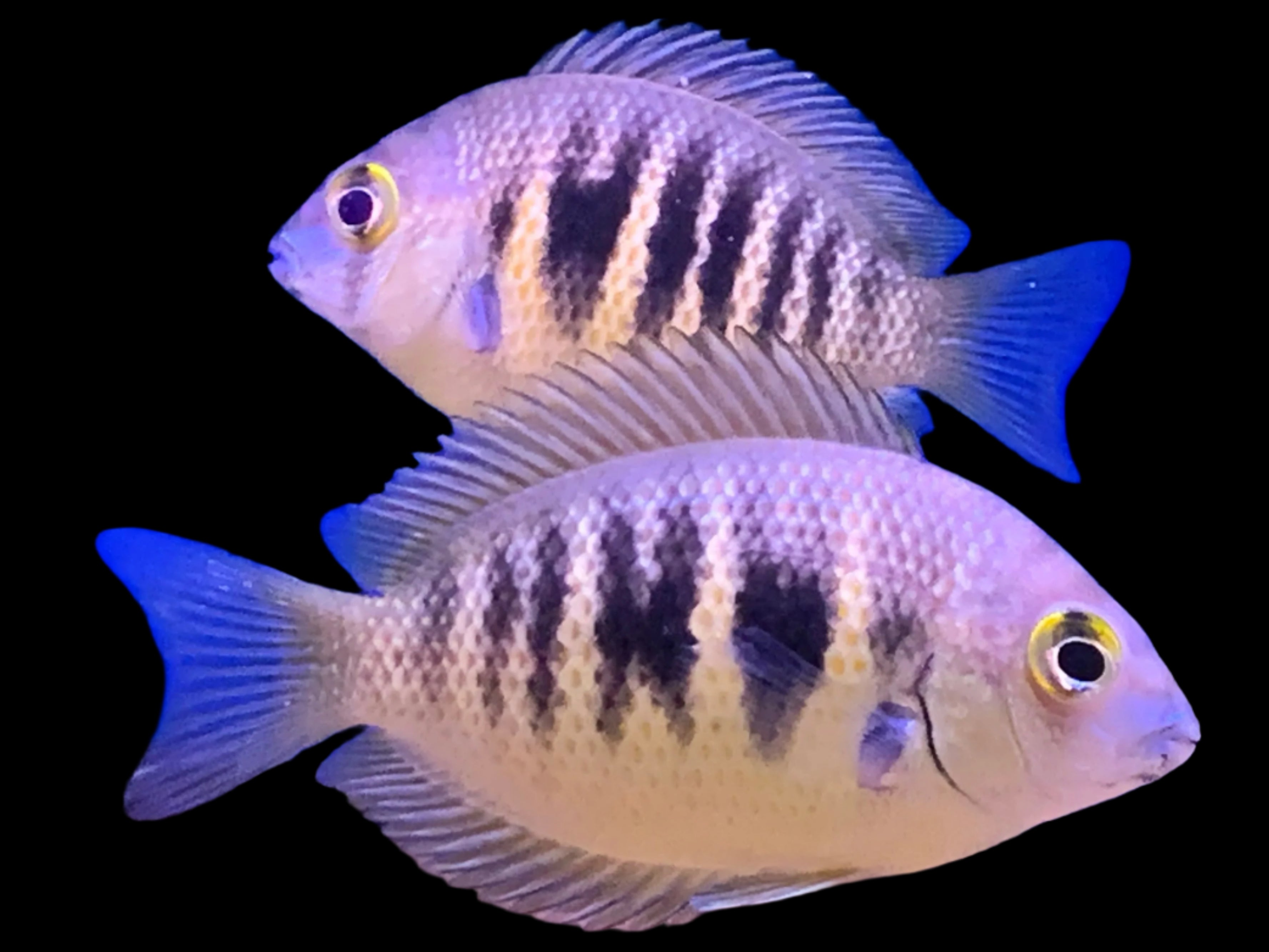Description
Canara Pearlspot Cichlid – A Jewel of Indian Freshwaters
(Etroplus canarensis)
The Canara Pearlspot Cichlid (Etroplus canarensis) is a stunning, vibrant cichlid native to the freshwater rivers and lakes of southern India, particularly the Western Ghats. Known for its shimmering, iridescent scales and elegant, elongated body, this species is often considered a "pearl" of freshwater aquariums. With its peaceful temperament and unique appearance, the Canara Pearlspot Cichlid is a perfect addition for aquarists seeking a colorful, low-maintenance cichlid for their freshwater setups.
Key Features:
-
Gleaming Coloration: The body shimmers with a mix of green, blue, and yellow hues, often with pearl-like spots along the scales
-
Compact Size: Grows up to 10–12 cm (4–5 inches) in length, making it ideal for smaller to medium-sized tanks
-
Peaceful Nature: Non-aggressive towards tankmates, making it a great community fish
-
Hardy and Resilient: Tolerates a variety of water conditions and is easier to care for than many other cichlids
Tank Requirements:
-
Minimum tank size: 100 liters (25 gallons)
-
Temperature: 24°C–28°C (75°F–82°F)
-
pH: 7.0–8.0
-
Prefers a tank with plants, rocks, and caves for hiding
-
Moderate filtration and gentle water movement is ideal
Compatibility:
-
Best kept with other peaceful or semi-aggressive fish of similar size
-
Ideal tankmates include tetras, rasboras, livebearers, and other small to medium-sized species
-
May show territorial behavior during breeding, so ample hiding spaces and territories are important
Feeding Tips:
-
Omnivorous—enjoys a varied diet of high-quality pellets, flakes, live or frozen foods like worms, daphnia, and small crustaceans
-
Will also accept vegetables, including blanched spinach or zucchini
-
Feed 2–3 times a day in small amounts
Why Choose the Canara Pearlspot Cichlid?
The Canara Pearlspot Cichlid is a beautifully unique species with its shimmering pearl-like spots and tranquil nature. For aquarists seeking a colorful and easy-to-care-for cichlid, this fish offers a wonderful addition to community tanks and species-specific setups alike. Its hardy nature and striking beauty make it an ideal choice for hobbyists of all levels.
Click & Collect
Livestock will only be bagged once you arrive, or if you contact us in advance to request it ready beforehand.
Local Delivery
Order anything from our in-store range and have it delivered right to you.
-
Minimum spend: £50
-
Delivery up to 10 miles: £10
-
Delivery up to 25 miles: £20
Distances are measured “as the crow flies”, not by road.
Once your order is placed, we’ll be in touch to arrange a suitable delivery date and time.
Please note, delivery may take a little longer as we often group orders together to build an efficient delivery run.
Important: If you’re ordering a large aquarium, please ensure someone is available to help unload the van on arrival.
Dry Goods Delivery
-
DX Express: 1 working day, same-day dispatch before noon 0-75kg
-
Express Pallet: 1–3 working days 75-500kg
If you'd like to add more items to an existing order that hasn't yet been dispatched, please place a Click & Collect order and leave a note asking us to combine the orders.
Please note: We currently only dispatch parcels Wednesday to Friday.
Pre-Order
Want the full details? Check out our Terms & Conditions.
Livestock Delivery
Thursday Delivery – £24
-
Dispatched Wednesday afternoon
-
Delivered Thursday before 1pm
-
Order by Wednesday 12 noon
-
Minimum spend: £50
Friday Delivery – £24
-
Dispatched Thursday afternoon
-
Delivered Friday before 1pm
-
Order by Thursday 12 noon
-
Minimum spend: £50
Saturday Delivery – £29
-
Dispatched Friday afternoon
-
Delivered Saturday before 1pm
-
Order by Friday 12 noon
-
Minimum spend: £50
📦 Want to Add to an Existing Order?
No problem! Just place a Click & Collect order and leave a note asking us to link it with your original one (as long as it hasn’t been dispatched yet).
🛒 Dry Goods Now Included!
You can now include dry goods in your livestock delivery – perfect for topping up supplies in one go.
❄️ Please note: We can’t send frozen food with livestock – please order frozen items separately.
⚠️ Delivery Exclusions
Unfortunately, we’re unable to deliver livestock to the following postcodes:
Scotland & Isles:
AB30–AB56, DD8–DD10, DG3–DG9, DG12–DG14, FK17–FK21, KA18–KA19, KA26–KA30, PA20–PA38, PA80, PH3–PH40
Cornwall Isles: TR21–TR25
All of the following postcodes are excluded:
BT, HS, IM, IV, JE, KW
Plus Channel Islands and Shetland Islands
Payment & Security
Your payment information is processed securely. We do not store credit card details nor have access to your credit card information.

